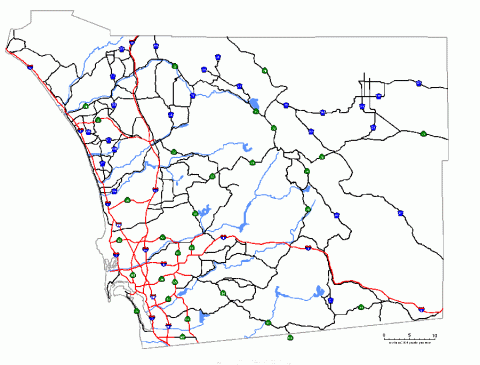<p></p>
<p>The County of San Diego now offers an online map of COVID-19 cases by community for local residents to be able to track how the virus is impacting their local neighborhoods, and the data shows lower-income communities are being hit disproportionately harder.</p>
<p>As of April 21st, the County reported 2,491 confirmed cases, 96 deaths, and 611 patients in local hospitals, 206 of those being in Intensive Care Units (ICU).</p>
<p>A review of cases by ZIP codes reveals some troubling facts about the impact of low-income and minority communities.</p>
<p>Chula Vista, for example, reported 286 cases which represent 11.48% of all the cases in the County, even though Chula Vista makes up only 8.13% of the County’s overall population. That is 78 cases more than the average should be based on the City’s proportional population.</p>
<p>When looking at Chula Vista’s cases by ZIP code, 64% of the cases are in the Western parts of the city where the socio-economic levels are lower than in the Eastern portions, despite the fact that the populations are fair equal between the two sides.</p>
<p>National City reports 72 confirmed cases which represent 2.8% of Countywide cases, but the City only has 1.8% of the total population. This is 27 cases higher than its proportional population. National City also has one of the highest concentrations of Latinos in the County at 19.9% of its population compared to 11.5% of the County’s population.</p>
<p>By comparison, Coronado has reported 7 COVID-19 cases, or .24% of the County’s cases, but has .4% of the County’s population. That represents half the amount of cases Coronado should have based on its proportional population.</p>
<p>Similarly, Solana Beach has reported only 6 cases, or .24% of the total, although it has .40% of the County’s population. Again that’s an underrepresentation of cases based on its population.</p>
<p>Health experts explain that COVID-19 infection rates may be higher in communities of color due to lack of access to health care because of work schedules, inability to pay co-payments, or immigration status that may impact their ability to seek medical treatment.</p>
<p>The number of confirmed cases in San Diego County is highest among people between 50 and 59 years old (473 cases), followed by those between 30 and 39 (464), those 40 to 49 (427), and those 20 to 29 (378). The number of cases among patients 70 to 79 years old total 191, and 154 cases among those 80 or older.</p>
<p>The online data can be reviewed on the County Department of Health and Human Services by linking <a href="https://www.arcgis.com/apps/opsdashboard/index.html#/96feda77f12f46638b…;
Image
Image

Category